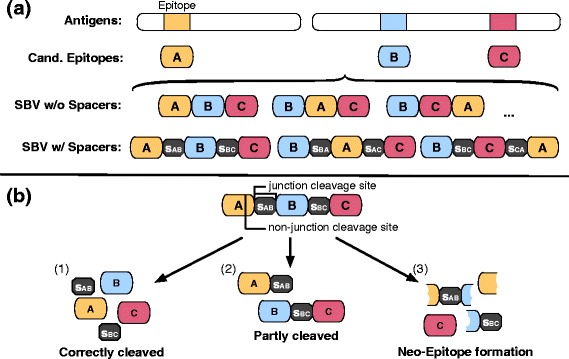Fig. 1.

Rational string-of-beads design. a Design process of a string-of-beads vaccine (SBV). Given a set of antigen candidates, epitopes are derived either experimentally or computationally. A selection of n candidate epitopes is determined, which form the basis of the SBV. These epitopes are either directly combined into a polypeptide or small connecting sequences (spacers) are used to link adjacent epitopes. In total, there are n! possibilities to arrange n epitopes into a SBV. b Possible cleavage outcomes of a SBV. The efficacy of a SBV depends on correct proteasomal cleavage. Desired is a cleavage pattern that correctly recovers all contained epitopes (1). Not all junction cleavage sites might be cleaved, which results in a partly cleaved and less effective SBV (2). Cleavage of the SBV at non-junction sites can create neo-epitopes. Generation of neo-epitopes can induce unwanted immune responses and reduces the amount of desired epitopes generated by the SBV (3)
